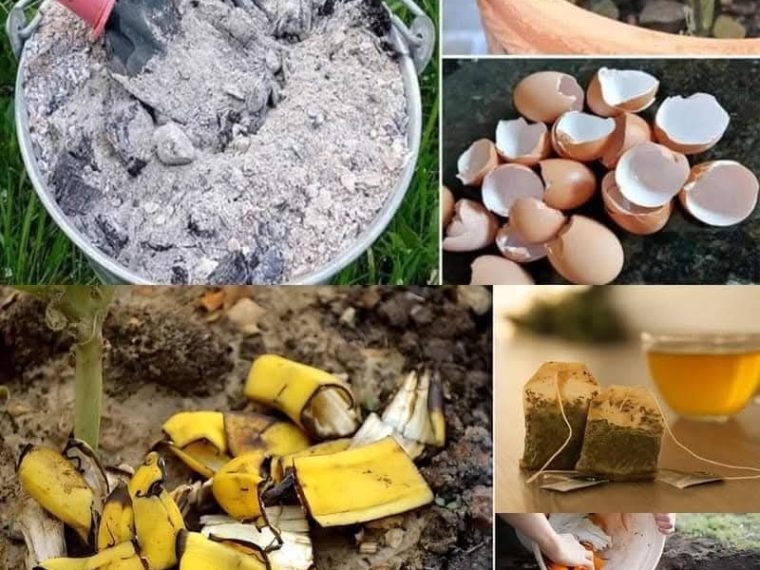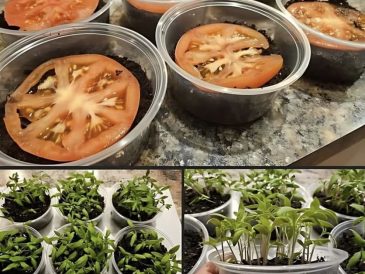🌱 12 Homemade Fertilizers for Plants You Can Easily Find at Home
Looking for a natural, cost-effective way to nourish your garden or houseplants? You don’t have to rely on store-bought chemical fertilizers — your kitchen, pantry, and even trash bin are full of plant-friendly nutrients! Here are 12 homemade fertilizers that are easy to make and incredibly effective.
1. 🍌 Banana Peels
Best for: Flowering plants (roses, tomatoes, peppers)
Banana peels are rich in potassium and phosphorus, both essential for blooming and fruiting. Just chop up the peel and bury it near the roots, or soak it in water for a few days and use the water as a liquid fertilizer.
2. 🥚 Crushed Eggshells
Best for: Tomatoes, peppers, and plants that need calcium
Eggshells are packed with calcium carbonate, which helps prevent blossom-end rot. Rinse and dry them, then crush and mix into the soil or compost.
3. ☕ Used Coffee Grounds
Best for: Acid-loving plants like blueberries, azaleas, and hydrangeas
Coffee grounds provide nitrogen, improve soil texture, and attract worms. Let them dry and sprinkle them directly on the soil or mix into compost.
4. 🌾 Rice Water
Best for: Houseplants and leafy greens
The leftover water from rinsing rice contains vitamins, minerals, and starches that feed soil microbes. Use it to water your plants once a week.
5. 🍚 Cooked Oatmeal
Best for: Seedlings and small plants
Diluted, unsweetened oatmeal is a gentle source of nutrients that supports early growth. Use it sparingly to avoid mold.
6. 🐟 Aquarium Water
Best for: Most houseplants and garden plants
Dirty aquarium water (from freshwater tanks) is rich in nitrogen, phosphorus, and beneficial bacteria. Just pour it onto the soil — not directly on leaves.
7. 🌿 Epsom Salt
Best for: Peppers, tomatoes, roses
Epsom salt is high in magnesium and sulfur, which promote lush foliage and strong blooms. Mix 1 tablespoon into a gallon of water and apply monthly.
8. 🍞 Stale Bread Compost
Best for: General compost enrichment
Tear up stale bread and add to your compost bin — it provides carbohydrates that fuel microbes and improve compost quality. Don’t use moldy bread unless your compost heats up well.
9. 🌰 Nut Shells
Best for: Soil aeration and compost
Crushed peanut or walnut shells add structure to soil and slowly release nutrients. Rinse and break them down before adding to compost or soil mix.
10. 🧅 Vegetable Scraps
Best for: Compost or liquid fertilizer
Soak leftover veggie peels (carrots, spinach, lettuce, etc.) in water for a few days, then strain and use the “compost tea” to water your plants. Compost the solids.
11. 🌻 Wood Ash
Best for: Lawns, fruit trees, and root vegetables
Wood ash (from untreated wood) is a great source of potassium and lime. Sprinkle lightly on soil — not on acid-loving plants like blueberries.
12. 🍷 Molasses
Best for: Compost booster and general feeding
Molasses is full of sugars, iron, calcium, and magnesium. Add 1 tablespoon to a gallon of water and apply monthly. It feeds soil microbes and enhances overall plant health.
⚠️ A Few Tips:
- Always apply fertilizers in moderation — too much of anything can harm plants.
- When using kitchen scraps, avoid salty, oily, or processed food waste.
- Test homemade fertilizers on a small area first to check your plant’s reaction.
🌿 Final Thoughts
Homemade fertilizers are not only effective but also sustainable and budget-friendly. With a little creativity and consistency, your plants can thrive using nothing more than your kitchen scraps and a few basic household items.



